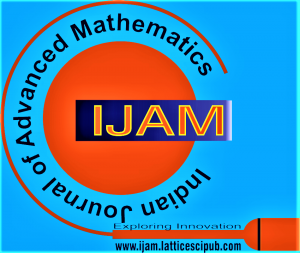![]()
On Some Relations Involving the Ramanujan’s Tau Function
R. Sivaraman1, J. López-Bonilla2, S. Vidal Beltrán3
1Dr. R. Sivaraman, Department of Mathematics, Dwaraka Doss Goverdhan Doss Vaishnav College, Chennai (Tamil Nadu), India.
2Prof. J. López-Bonilla, ESIME-Zacatenco, Instituto Politécnico Nacional, Edif. 4, 1er. Piso, Col. Lindavista CP 0778, CDMX, México.
3S. Vidal Beltrán, ESIME-Zacatenco, Instituto Politécnico Nacional, Edif. 4, 1er. Piso, Col. Lindavista CP 0778, CDMX, México.
Manuscript received on 18 March 2024 | Revised Manuscript received on 21 March 2024 | Manuscript Accepted on 15 April 2024 | Manuscript published on 30 April 2024 | PP: 16-18 | Volume-4 Issue-1, April 2024 | Retrieval Number: 100.1/ijam.A116804010424 | DOI: 10.54105/ijam.A1168.04010424
Open Access | Editorial and Publishing Policies | Cite | Zenodo | OJS | Indexing and Abstracting
© The Authors. Published by Lattice Science Publication (LSP). This is an open-access article under the CC-BY-NC-ND license (http://creativecommons.org/licenses/by-nc-nd/4.0/)
Abstract: a recurrence relation is known for Ramanujan’s tau-function involving the sum of divisors function𝝈(𝒏), whose solution gives a closed formula for 𝝉(𝒏) in terms of complete Bell polynomials, and a determinantal expression for 𝝈(𝒎) where the values participate 𝝉(𝒌).
Keywords: Sum of divisors function, Recurrence relations, Ramanujan’s function 𝝉(𝒏), Bell polynomials, Chebyshev polynomials of the second kind.
Scope of the Article: Discrete Mathematics
